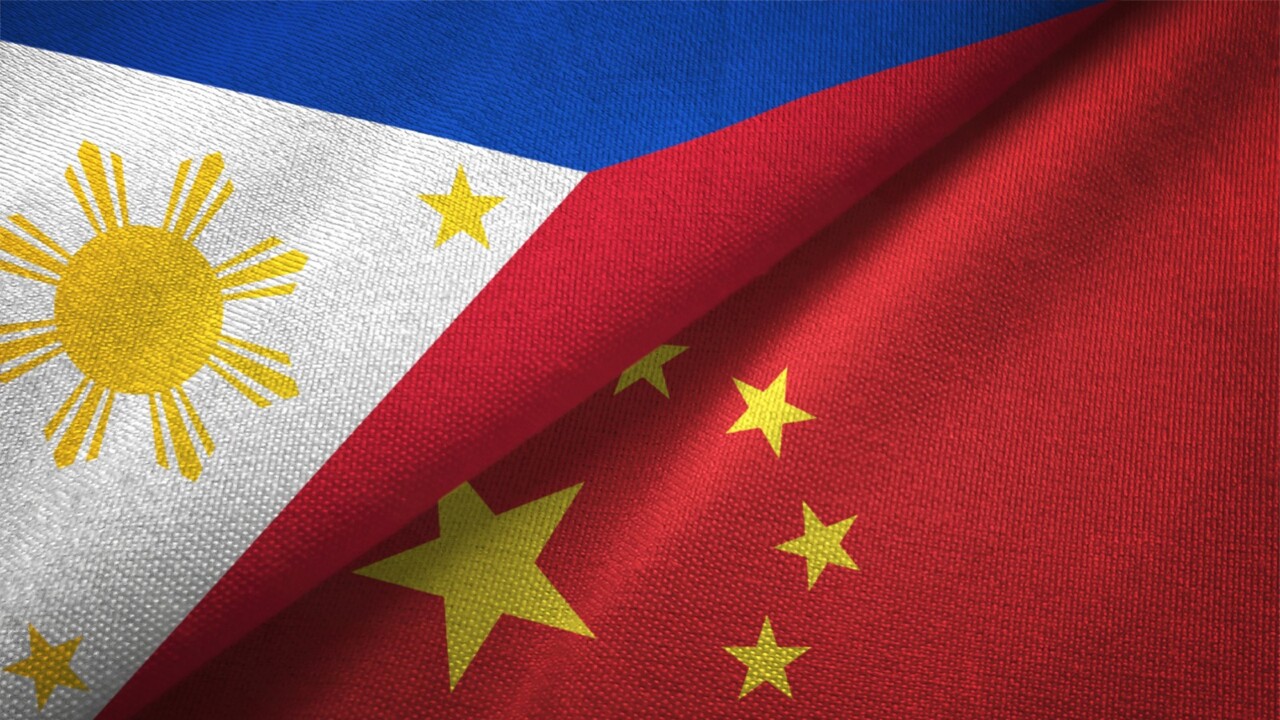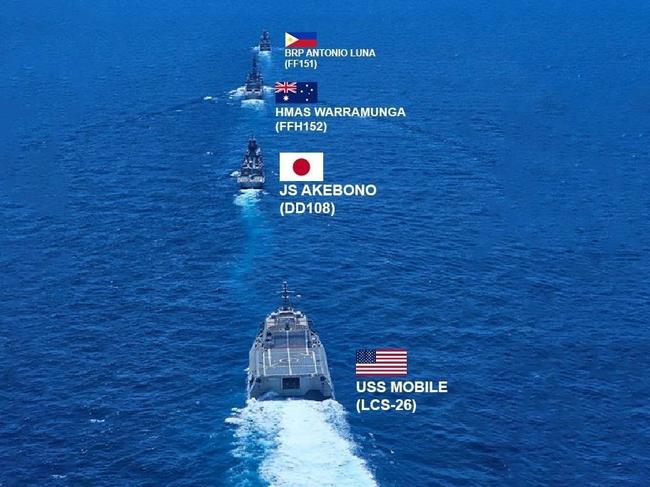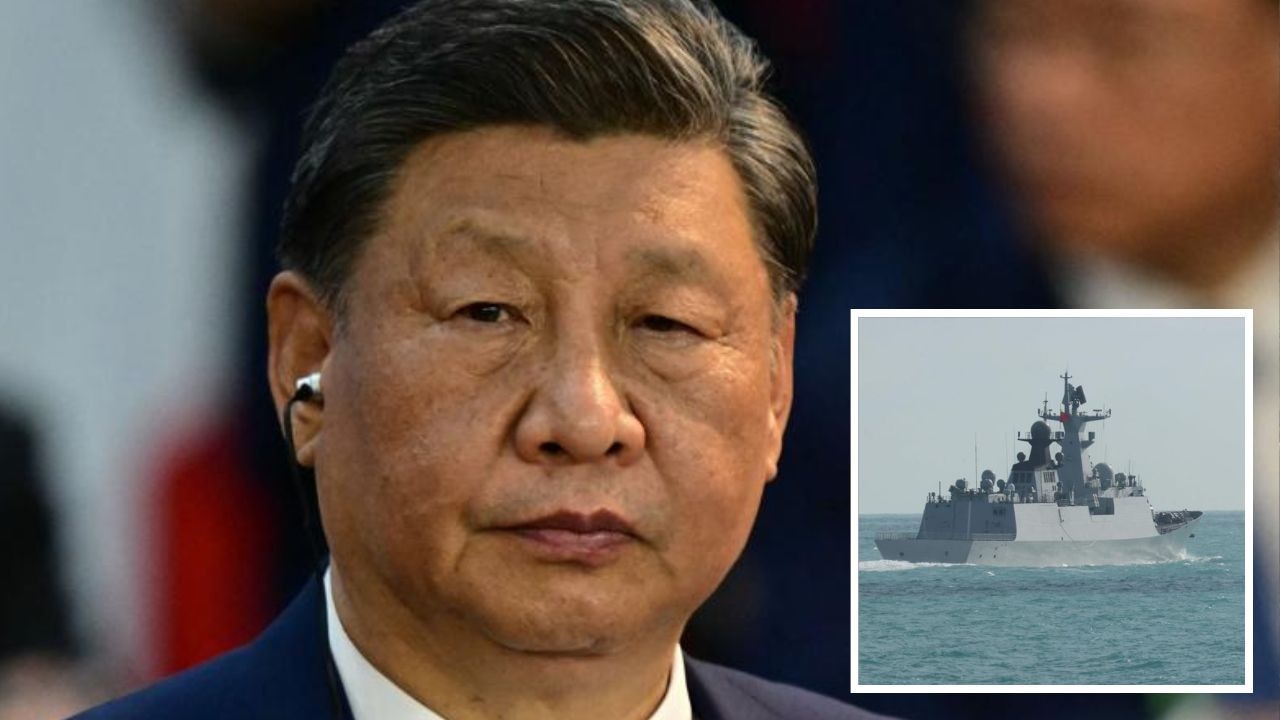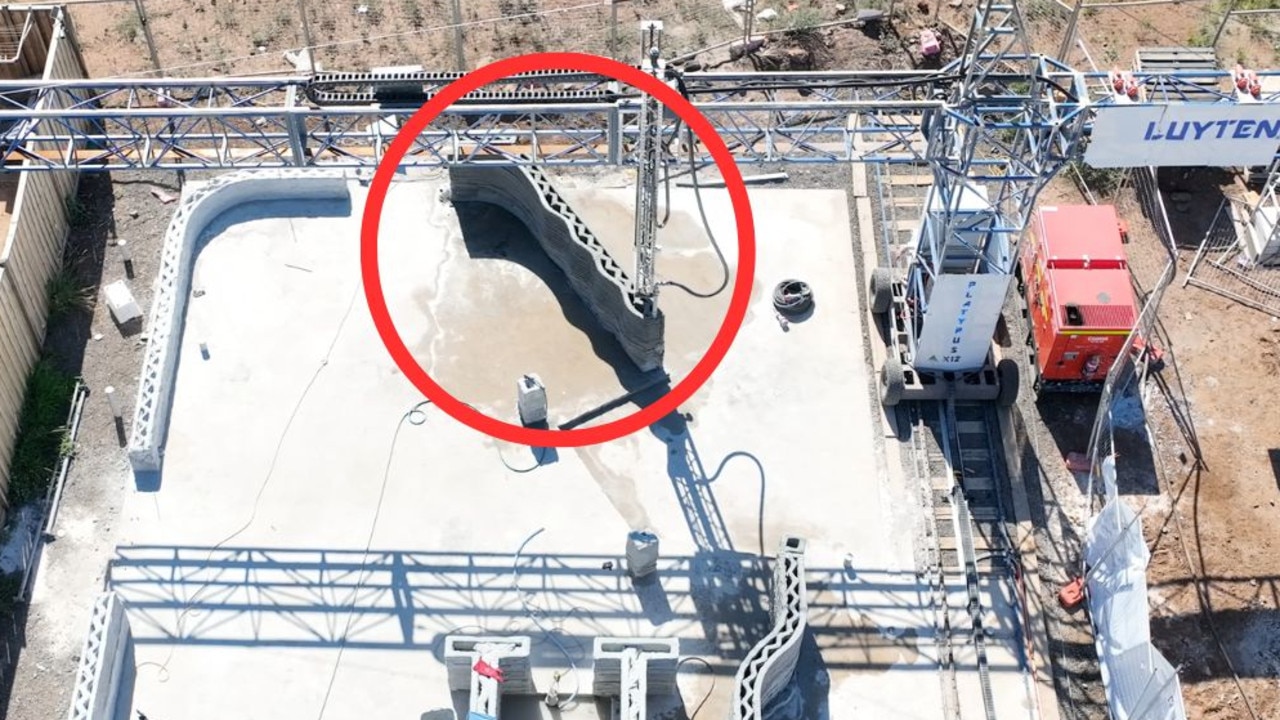China blows up as Australia joins military stand in South China Sea
China has promised Australia will become the “PLA’s target” after a move in the South China Sea that angered Beijing.

Innovation
Don't miss out on the headlines from Innovation. Followed categories will be added to My News.
Beijing says it launched “combat patrols” at the weekend as an Australian warship joined US and Japanese forces asserting the territorial rights of The Philippines in the South China Sea.
“If the concerned parties intend to escalate tensions in the South China Sea and undermine China’s territorial and sovereign integrity, then they will become the PLA’s target,” a Chinese Communist Party-approved Global Times editorial asserted this yesterday. “This is not ambiguous and is the correct signal that the concerned parties should receive from the actions of the PLA.”
The Australian frigate HMAS Warramunga joined the Filipino frigate BRP Antonio Luna, the Japanese destroyer JS Akebono and the US littoral combat ship USS Mobile in disputed waters to test interoperability and demonstrate a united stand against Beijing’s territorial ambitions.

PH, USA, AUS & JPN hold first Multilateral Maritime Cooperative Activity in WPS
— Armed Forces of the Philippines (@TeamAFP) April 7, 2024
Read: https://t.co/Wdljzv8LlP@HQJOC@DefenceAust@AusAmbPH#YourADF#AusNavy@ModJapan_en@dndphl@Philippine_Navy@IndoPacom@USEmbassyPH@USEmbassyTokyo@US7thFleet#AFPyoucanTRUST
📷 WESCOM pic.twitter.com/w0g6sYGXho
The display came amid a recent escalation of hostility, with Beijing’s Coast Guard and Maritime Militia using water cannons, lasers, obstacles, and the threat of ramming to prevent supplies reaching a World War II landing ship used as a symbol of Manila’s sovereignty over portions of the Spratly Islands.
US President Joe Biden is due to attend a trilateral summit with the leaders of the Philippines and Japan later this week to discuss the growing crisis. Australia is not participating.
The long-range anti-submarine frigate HMAS Warramunga arrived at the Philippine home island of Palawan, 190 km from the disputed islands, last week. The visit is part of a three-month “Indo-Pacific regional presence deployment” that began in late January.
The weekend’s “Multilateral Maritime Cooperative Activity” manoeuvres reportedly demonstrated anti-submarine warfare techniques and tested co-ordination and co-operation between the ships and supporting aircraft of all four countries.
“All military activities that mess up the situation in the South China Sea and create buzzes are under control,” Beijing’s People’s Liberation Army (PLA) Southern Theater Command asserted in an overnight statement.
It has yet to state what “combat patrols” entailed.
Tweaking the dragon’s nose
“Three changes have brought about a new phase in the conflict,” says the Lowy Institute’s Susannah Patton.
“First, China’s intensified use of water cannon has injured several Philippine Navy personnel.
“Second, visibility of such incidents has increased – due to both more international monitoring and the Philippine Coast Guard’s new transparency strategy.
“Finally, Beijing has ramped up propaganda explicitly depicting the Philippines as the troublemaker, a shift from previous narratives that mostly blamed tensions on American interference.”
The Chinese Communist Party asserts “historic” ownership over almost the entirety of the South China Sea under its “10-Dash Line” claim. An international court of arbitration ruling in 2016 rejected that claim as “baseless”, and reaffirmed the territorial rights of regional nations such as the Philippines, Vietnam, Malaysia and Indonesia as defined by the International Convention on the Law of the Sea (UNCLOS).
Beijing, a signatory to the treaty, insists it has no jurisdiction over “Chinese waters”. And it went ahead to arbitrarily build a network of artificial island fortresses throughout the region to impose its military dominance over the waterway.
“Beijing’s narrative is that every time the situation escalates, it is due to its opponents’ “provocations”, and so it bears no responsibility for any of its aggressions,” Stanford University security analyst Ray Powell told Radio Free Asia.
“China’s strategy is to escalate until its adversaries give up, so beating the war drums is intended to cause them to back off.”
Where might makes right
“The Philippines must understand that it is extremely dangerous to gamble its entire national fate on the balance of regional power games, where not only China but also the entire region’s stability forces are on the other end of the scale,” the Global Times asserts.
But “the entire region’s stability forces” do not support Beijing.
Japan and South Korea are in talks to strengthen their opposition to Chinese incursions. And while ASEAN remains silent, many of its member nations are victims of Beijing’s territorial aspirations.
Instead, China’s Southern Theatre Command last week conducted a solo “real combat”, “live fire” regional presence exercise in what it called a ‘timely and forceful response’ to increased global pushback.
This involved practising operations against “armed fishing boats harassing China in its sea areas,” a Ministry of Defence statement asserts.
🇨🇳PLA Southern Theater Command conducted real combat training in the South China Sea.
— Hu Xijin 胡锡进 (@HuXijin_GT) March 31, 2024
The 🇵ðŸ‡Marcos Jr administration should notice this: 🇨🇳PLA organized combat training exercises in simulated strikes of “enemy†armed fishing boats harassing China in its sea areas.
In my… pic.twitter.com/InIfXSM51L
“In my opinion, “armed fishing boats” obviously include Philippine Coast Guard vessels that violate China’s sovereignty,” adds the former editor of the Beijing-controlled Global Times, Hu Xijin.
Only Beijing believes it has such sovereignty. Even Moscow, which has oil exploration partnerships in the South China Sea with Vietnam, quietly ignores the claim.
But Beijing is refusing to back down on its attempts to force Filipino fishers out of the islands and blockade the BRP Sierra Madre outpost.
The number of Chinese vessels at Second Thomas Shoal during resupply missions has increased substantially since 2021, while Philippine ship counts have remained consistently low. See what the data says about China-Philippine tensions on AMTI: https://t.co/Hfe9RD88NXpic.twitter.com/YMZH3njsLA
— AMTI (@AsiaMTI) April 7, 2024
“Under the guise of ‘protecting fishing’, Philippine government ships have illegally violated and provoked, organised media to deliberately incite and mislead, continuing to undermine stability in the South China Sea,” China Coast Guard spokesman Gan Yu said late last week.
“We are telling the Philippines that any infringement tactics are in vain,” he added.
Late last month, Philippine President Ferdinand Marcos vowed his country would not be “cowed into silence, submission, or subservience” by Beijing.
And the Philippines military says its drills with Australia, the US and Japan “demonstrated the participating countries’ commitment to strengthen regional and international co-operation in support of a free and open Indo-Pacific through interoperability exercises in the maritime domain.”
Jamie Seidel is a freelance writer | @JamieSeidel
Originally published as China blows up as Australia joins military stand in South China Sea





